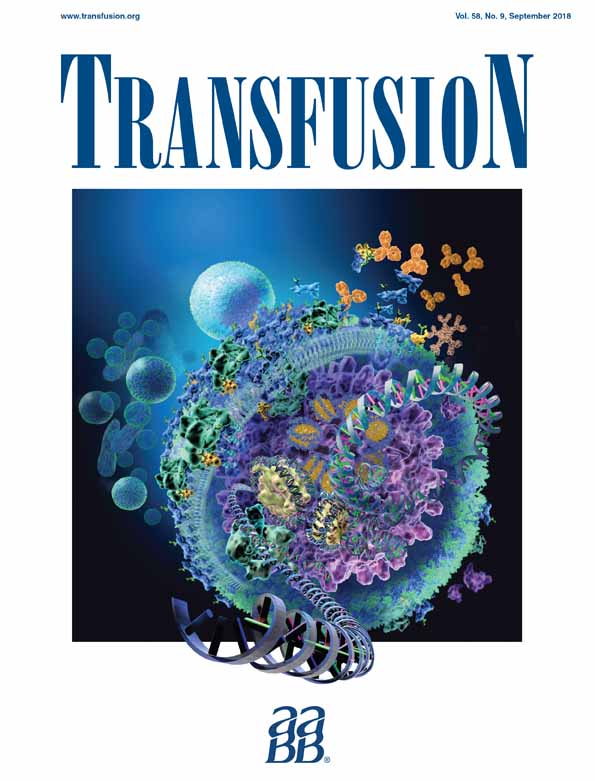Cardiac stress biomarkers after red blood cell transfusion in patients at risk for transfusion-associated circulatory overload: a prospective observational study
Abstract
BACKGROUND
Transfusion-associated circulatory overload (TACO) is a leading cause of serious reactions. In regard to TACO, little is known regarding biomarkers as a predictor, their most informative timing, or thresholds of significance or differentiation from other reactions.
STUDY DESIGN AND METHODS
In this study of inpatients at risk for TACO (age ≥ 50 years) receiving 1 red blood cell unit, cardiac biomarkers, brain natriuretic peptide (BNP), N-terminal pro-BNP (NT-proBNP), and high-sensitivity troponin were measured at baseline, 6 to 12 hours (except troponin) posttransfusion, and 18 to 24 hours posttransfusion. Primary outcome was a critical increase in biomarkers (>1.5-fold increase and supranormal) at 18 to 24 hours.
RESULTS
Fifty-one patients were analyzed; 29% had cardiovascular disease, 73% had one or more cardiac risk factors, and 50% took cardiac or antihypertensive therapies. Although eight (16%) developed an increase in systolic pressure of at least 30 mmHg and four (8%) reported dyspnea and/or cough, none had TACO. At baseline, BNP level was more than 100 ng/L in 59% and NT-proBNP was more than 300 pg/mL in 83%. A total of 25% had a BNP critical increase, 33% had a NT-proBNP critical increase, and 2% had a troponin critical increase at 18 to 24 hours. Overall, 38% had at least one biomarker critical increase and NT-proBNP/BNP concordance was 84%. An increase in the NT-proBNP (>1.5-fold increase and >300 pg/mL) at 18 to 24 hours was the commonest biomarker change.
CONCLUSIONS
An increase of the NT-proBNP at 18 to 24 hours may be the preferred surrogate marker for identifying a patient experiencing physiologic difficulty in handling the volume challenge. Larger studies are needed to clarify the risk of TACO for a given pretransfusion biomarker profile and the correlation between TACO and increase in biomarkers after transfusion.
CONFLICT OF INTEREST
The authors have disclosed no conflicts of interest.




